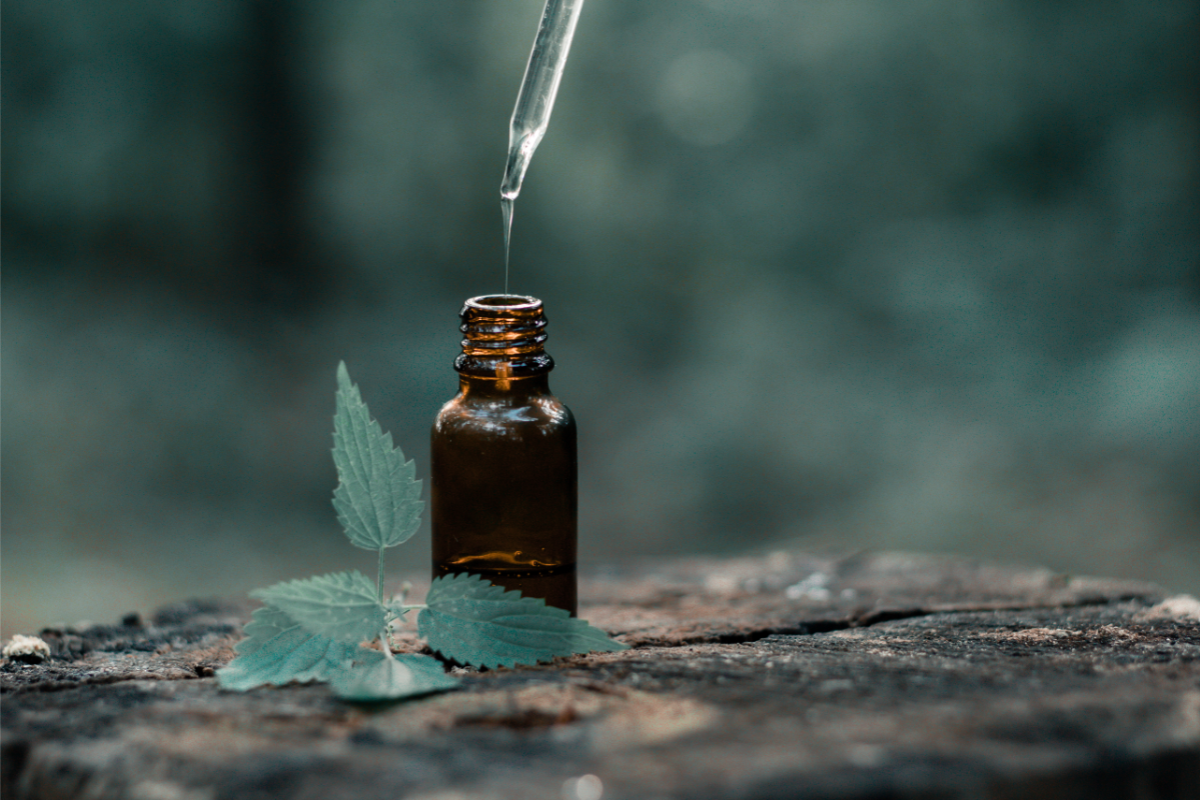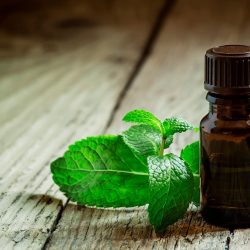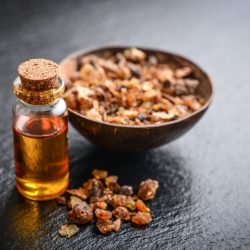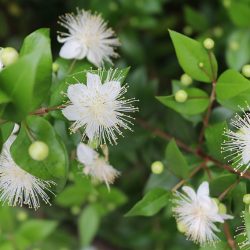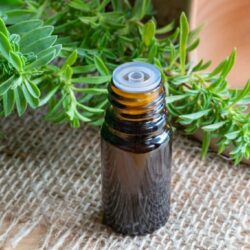The world of essential oils is full of aromatic and therapeutic treasures, and Ravensare Essential Oil is one of them. Derived from the exotic Ravensare tree of the same name, native to Madagascar, this essential oil offers an enchanting ballet of well-being and healing. In this article, we dive into the fascinating world of this precious oil, exploring its botanical characteristics, chemical composition, therapeutic uses and much more. Get ready to discover the secrets of this essential oil of a thousand virtues, whose history goes back centuries and whose benefits are backed up by modern science. Welcome to the enchanting world of Ravensare Essential Oil.
What are the characteristics of aromatic Ravensare?
Ravensare, whose botanical name is Ravensara aromatica, belongs to the Lauraceae family. The essential oil-producing organs are the leaves and bark.
What are its botanical attributes?
The Ravensara aromatica tree(also known by its scientific name Agatophyllum aromaticum) belongs to the Lauraceae family. It is endemic to Madagascar. Due to similarities in Malagasy nomenclature, it is often confused with Ravintsara, also known as Chinese camphor(Cinnamomum camphora), another member of the Lauraceae family. It should be noted that Chinese or Japanese camphor is rich in camphor. In contrast, the aromatic Ravensare from Madagascar contains minimal quantities, according to a study published in the International Journal of Aromatherapy (Vol 11. 1, Behra O. and C. Rakotoarison, 2001).
Aromatic Ravensare is a bushy tree growing spontaneously in the tropical rainforests of Madagascar, and can reach heights of 18 to 20 metres. Its hairless, alternate leaves are leathery or semi-coriaceous and elliptical to obovate-elliptical in shape. The upper surface of the leaves is green, shiny and smooth.
What are its floral characteristics?
The tree produces green bell-shaped or ureola-shaped flowers measuring between 2 and 3.5 mm long and 2 to 2.5 mm in diameter. The flowering period is from November to January. The fruits of this tree are almost spherical, with a diameter of 2.5 cm or more. They have a relatively smooth surface and give off a particularly aromatic scent.
The distinction between Ravintsara and Ravensara aromatica essential oils is a subject frequently discussed in the world of aromatherapy, due to the closeness of their names. However, these two oils differ in both their chemical composition and their olfactory profile. Ravintsara essential oil has an odour that is generally described as fresh and camphorated. Ravensara aromatica oil, on the other hand, is distinguished by more complex olfactory notes, notably of aniseed and pepper.
What are the uses of Ravensara essential oil?
Ravensara aromatica, also known as allspice, clove or Madagascar spice, is a botanical species whose dried leaves are used in cooking. They are frequently used as a substitute for bay leaves when preparing sauces or seasoning roast meats. The aromatic profile of these leaves is complex. It evokes a combination of spices such as pepper, cinnamon, nutmeg and cloves. Steam distillation of the leaves or bark of Ravensara aromatica produces a specific essential oil.
What is its chemical profile?
The essential oil extracted from Ravensara aromatica leaves has a specific chemical composition, determined by analytical methods such as gas chromatography-mass spectrometry (GC-MS). The major active components of this essential oil are as follows:
- Monoterpenes: limonene (15-20%), sabinene (8-10%), alpha-terpinene (7-8%), delta-3-carene
- Sesquiterpenes: germacrene-D, beta-caryophyllene (5-6%)
- Terpene phenols: methylchavicol, methylugenol
Another essential oil is extracted from the bark. This one has a different composition, with the main active components being :
- estragol (90-95%)
- limonene
How does it work?
Ravensara aromatica essential oil has a composition rich in terpenes, notably alpha-pinene and beta-pinene, limonene, paracymene and sabinene. This specific biochemical composition gives the oil a range of pharmacological properties, including :
- Anti-inflammatory and analgesic (monoterpene carbides): Monoterpene carbides such as limonene and sabinene inhibit the synthesis of inflammatory mediators such as prostaglandins, which contributes to their anti-inflammatory and analgesic effects. These properties are particularly useful for treating conditions such as muscle pain, arthritis and rheumatism.
- Antispasmodic and Relaxing (linalool, limonene): Linalool and limonene have relaxing effects on the nervous system. Ravensara aromatica essential oil can therefore be massaged or diffused to help you relax and let go.
- Antiseptic (linalool, limonene, sabinene): Compounds such as limonene, linalool and sabinene have antiseptic properties, making this essential oil suitable for treating urinary tract infections such as cystitis, as well as managing skin infections.
- Immunostimulant: The essential oil may also play a role in modulating the immune response, although further studies are needed to elucidate the exact mechanisms.
What are the indications for using this essential oil?
Ravensara aromatica essential oil has a wide range of clinical applications due to its diverse pharmacological profile. Its effects are attributed to a synergy between its various bioactive components, notably monoterpene carbides, linalool, limonene and sabinene.
Ravensare essential oil has scientifically proven properties such as:
- Anti-inflammatory, Analgesic: management of musculoskeletal pain, including arthritis and osteoarthritis.
- Antiseptic, Antiviral: Immune Support and Airborne Antiseptic such as neutralising the spread of micro-organisms in the air and in preventive use in the event of epidemic outbreaks.
- Viral diseases and ENT infections : Effective against diseases such as measles, German measles, chickenpox and shingles, as well as ENT infections such as bronchitis, influenza and sinusitis.
It is also used traditionally for :
- Rheumatic and joint pain: pain associated with various rheumatic and joint disorders.
- Migraines and headaches
- Viral infections: chickenpox, measles, rubella and shingles.
It is also said to have energetic properties. In fact, it is said to be a nerve tonic, useful in cases of stress, nervousness and fatigue.
How is Ravensare used?
Ravensara aromatica essential oil has a wide range of applications, from treating ENT infections to problems associated with stress and fatigue.
What dosage should you choose?
Here’s a methodological guide for various applications.
Skin application is preferred for :
- Skin problems skin problems: Dilute one drop of essential oil in a vegetable oil, then apply to the area concerned and massage gently.
- Muscle and joint pain: Dilute in a vegetable oil and massage into the affected area.
- Circulatory problems (heavy legs, oedema) apply the essential oil diluted in a vegetable oil to the affected area.
For respiratory ailments, the best way is :
- ENT infections and fatigue: A few drops can be inhaled or diffused into the air, particularly as a preventive measure.
- Bronchitis: To massage the thorax and spine, as well as the soles of the feet, use the essential oil diluted in a vegetable oil.
To improve mental well-being, you can :
- Stress, Nervousness and Fatigue: Dilute 5 to 10 drops in bath water, after mixing the essential oils with a dispersant.
- Depression and sleeping problems massage the upper back and spine with the essential oil diluted in a vegetable oil.
Inhalation and diffusion are recommended to purify the atmosphere or for applications related to mental well-being. Internal use of this essential oil is not recommended.
What are the precautions for use?
There are a number of precautions and contraindications to using Ravensara aromatica essential oil, despite its wide range of therapeutic properties. You should consult your doctor before using Ravensara aromatica, especially if you suffer from asthma or epilepsy. Ingestion should only be undertaken under medical supervision.
For skin applications, dilution in a vegetable oil is mandatory. The recommended ratio is 20% Ravensara aromatica essential oil to 80% vegetable oil. This parameter is all the more important when applying to large areas of skin.
Contraindications mainly concern pregnant women and children under the age of 8. The use of this oil should be advised against during the breast-feeding period. Ravensara aromatica essential oil must be clearly differentiated from Ravintsara essential oil, which comes from the Cinnamomum camphora plant, to prevent any confusion or incorrect use.
In summary, Ravensara aromatica essential oil is a versatile therapeutic agent. It nevertheless requires a rigorous framework for use, guided by medical precautions and clear guidelines.
What is the history of Ravensara?
Ravensara aromatica, a plant endemic to Madagascar, belongs to the Lauraceae botanical family. The seeds of this species are commonly known as “Madagascar nutmeg”. They are used as a spice in a variety of culinary preparations. The etymology of the name “ravensare” comes from the Malagasy terms “ravina”, meaning leaf, and “tsara”, meaning good. This nomenclature no doubt reflects the many beneficial properties attributed to this plant, both culinary and medicinal.
What are its origins?
It is the “medicine tree”, called Havozo by the Malagasy, and used for both physical and mental ailments. For a long time, it was confused with Ravintsara, a type of camphor tree from Madagascar that contains very little camphor and is closer to Eucalyptus.
Ravensara used to be one of the ‘spices’ sought by sailors on behalf of trading companies. In 1658, Flacourt wrote: “The fruit is like a green walnut whose rinceaux bark (branches) and leaves; it is also one of the best spices in this country”. Shortly afterwards, François Martin declared: “Of all the things I have noticed, the most singular is the nut of ravensal in the shape of a nutmeg? This nut has the smell of all the spices together… the leaves are also used instead of bay leaves”.
But what about today?
Sonnerat discovered Ravensara aromatica in 1872, marking the first scientific documentation of this species. Then, in 1950, Tanguy described Ravensara anisata, specifying its aniseed odour as a distinct characteristic. However, it turns out that these two varieties are technically identical. Ravensara anisata is endemic to Madagascar and means “tree that smells”.
According to the work of Boiteau, Ravensara aromatica leaves are used to stimulate digestion and help eliminate intestinal gas. In Madagascar, the essential oil extracted from this plant is traditionally recommended for treating a wide range of viral infections wide range of viral infections including herpes. One of its common applications is atmospheric diffusion, a method recommended for purifying the air by eliminating viral particles. In popular medicine, it is used to relieve bronchopulmonary ailments, muscular contractures and fatigue. Essential oils rich in estragole are recommended for relieving inflammation.
Source:
- https://www.sciencedirect.com/science/article/abs/pii/S096245620180062X
- https://www.researchgate.net/publication/239790220

